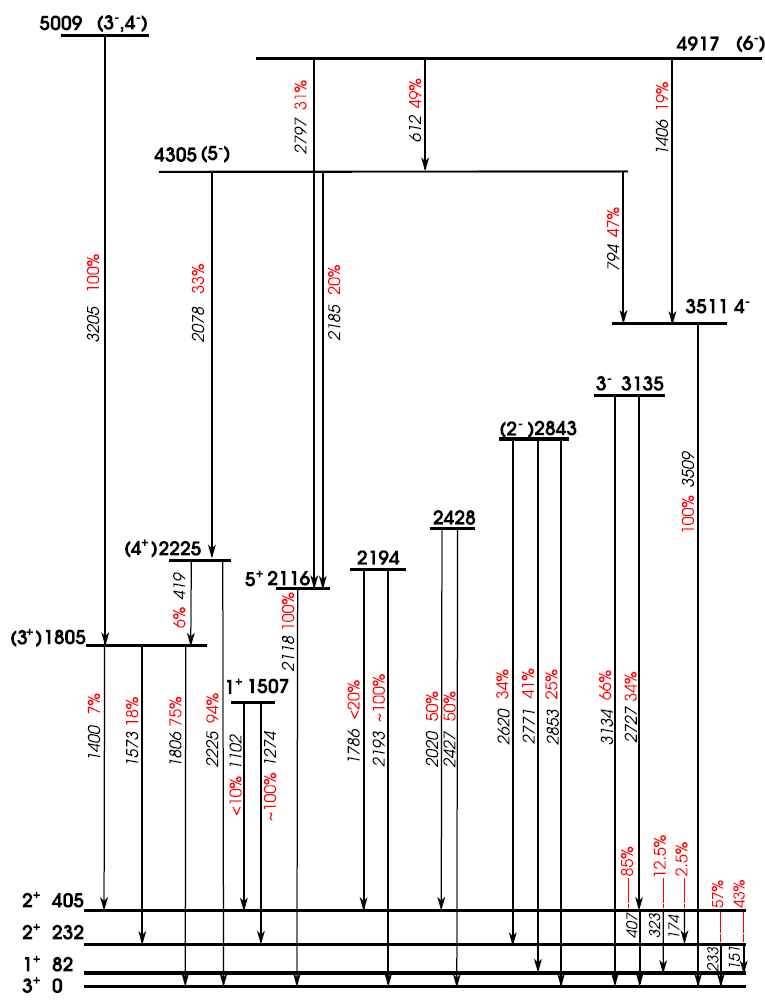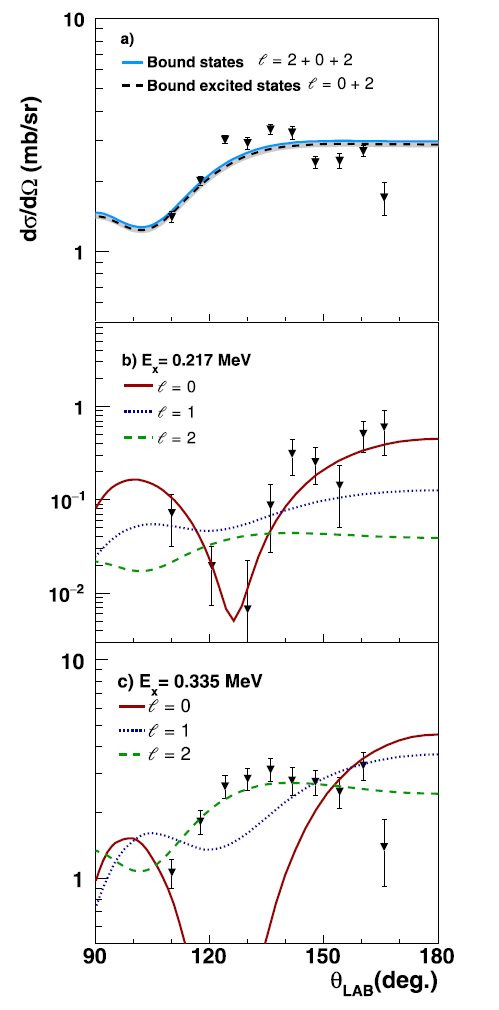Transfer reactions
For these investigations, which have focused on studies of (d,p) reactions, an array of tracked silicons (TiaRA, SHARC, MUST2/MUGAST), typically in a quasi-4p configuration, has been used in conjunction with germanium detectors (TIGRESS and EXOGAM) to tag decays of excited bound states. In addition to providing higher resolution than can be achieved by proton detection, gamma cascades can provide additional information about the spin-parity of the levels. The SHARC+TIGRESS configuration has been used at ISAC2-TRIUMF, while the program at GANIL has used the combination TiaRA+MUST2+EXOGAM and, more recently, MUGAST+EXOGAM.
RECENT RESULTS
Evolution of the structure around the "inversion island" N=20
The neutron transfer reaction, (d,pg), was performed with a reaccelerated 25Na beam (5 MeV/nucleon) at the ISAC2 facility, TRIUMF. The results and their interpretation, aided by layered model calculations, indicate the important role played by the 1p3/2 neutron configuration in the structure of low-energy negative parity states in 26Na. Significantly, this demonstrates that the lowering of the 1p3/2 orbital relative to the 0f7/2 orbital, which our previous work has shown to occur in neighboring Z=10 25,27Ne nuclei (and also in Z=12 27,29Mg nuclei through studies elsewhere), also occurs at Z=11.

Read more
-
Shell evolution approaching the N=20 island of inversion: Structure of 26Na G Wilson et al, Phys. Lett. B759 (2016) 417Shell evolution approaching the N=20 island of inversion: Structure of 26Na G Wilson et al, Phys. Lett. B759 (2016) 417

Single-particle structure of 17C and the layered structure around N=14
Using a 17 MeV secondary beam/nucleon of 16C, obtained by in-flight fragmentation with the LISE3 spectrometer at GANIL, the d(16C,pg) reaction was studied using the TiaRA+MUST2+EXOGAM device. The spin-parity assignments 1/2+ and 5/2+ for the two bound excited states (Ex= 217 and 335 keV – identified by the associated gamma transitions) were confirmed. In addition, the spectroscopic factors deduced for both levels showed a marked uniparticle character, in agreement with the predictions of the layered model. This, together with the small energy difference between the 1/2+ and 5/2+ states, indicates that the N = 14 sublayer closure is absent in the 17C. These results, coupled with those described above obtained at RIBF for 19,21C, allow us to map the degeneracy of the ns1/2 and nd5/2 orbits close to the dripline stability valley.
Read more
-
Low-lying single-particle structure of 17C and the N=14 sub-shell closure. X Pereira-Lopez et al., Phys. Lett. B811 (2020) 135939Low-lying single-particle structure of 17C and the N=14 sub-shell closure. X Pereira-Lopez et al., Phys. Lett. B811 (2020) 135939